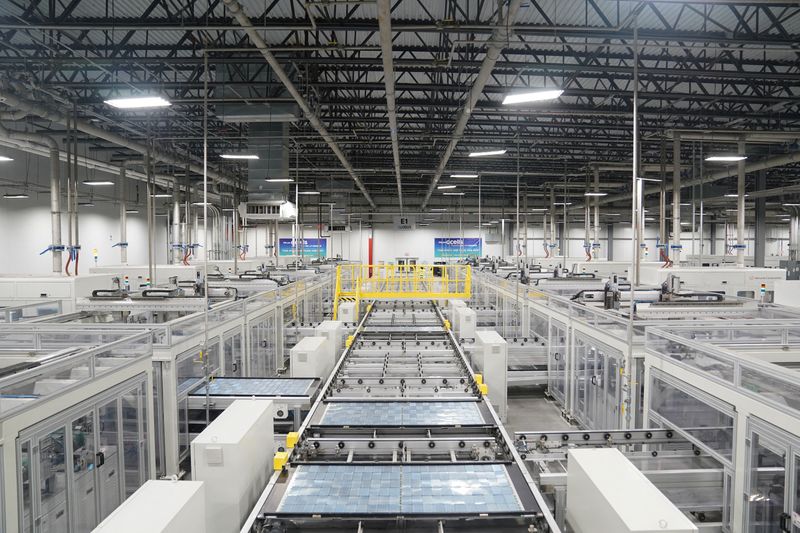(Reuters) -The U.S. Treasury on Thursday unveiled proposed guidelines for manufacturers seeking to claim a tax credit for making clean-energy components like solar panels and batteries, which is aimed at powering the energy transition with American-made products.
The subsidy, created by President Joe Biden's climate measure, the Inflation Reduction Act (IRA), is meant to create domestic jobs and reduce reliance on China in the turn away from fossil fuels.
"No matter how much we spend, we know that China is likely to outspend us when it comes to their investment in clean energy," Wally Adeyemo, deputy Treasury secretary, said on a call with reporters. "What we're doing is something different."
The so-called 45X tax credit for advanced manufacturing offers credits for each product made in the United States. The amount of credit depends on the component.
Reaction from industries was mixed. The solar industry trade group, Solar Energy Industries Association (SEIA), praised Treasury for allowing companies with contracted manufacturers to qualify for the credit and for offering incentives for optimizers, which help get more energy from solar panels.
The National Mining Association (NMA), on the other hand, criticized the rules for excluding raw materials from the production costs eligible for the critical mineral industry's 10% credit.
"By restricting the benefits available to the front end of the supply chain – the mines and minerals that drive the clean energy economy – the incentives offer a pittance of what Congress intended to bolster domestic raw material supply and take on China," NMA President Rich Nolan said in a statement.
The proposed rules clarify the definitions of eligible components like inverters, wind turbine parts and photovoltaic solar equipment. They also confirm credit amounts and include provisions to prevent claiming tax credits twice for the same component.
The guidance is subject to 60 days of public comment, which Treasury said it will consider before issuing final rules.
Companies have announced $140 billion in clean energy manufacturing investments since passage of the IRA in August 2022, the Treasury Department said. Manufacturers have said that the Treasury rules are critical for moving forward with their planned investments.
BlueGreen Alliance, a labor and clean energy group, said the tax credit could help create 670,000 jobs.

The department said an analysis of IRA manufacturing investments showed that 69% are in counties where the median household income is below the nationwide median.
The credits would begin phasing out in 2030 and end after 2032 for clean energy components. Critical mineral credits will not phase out.